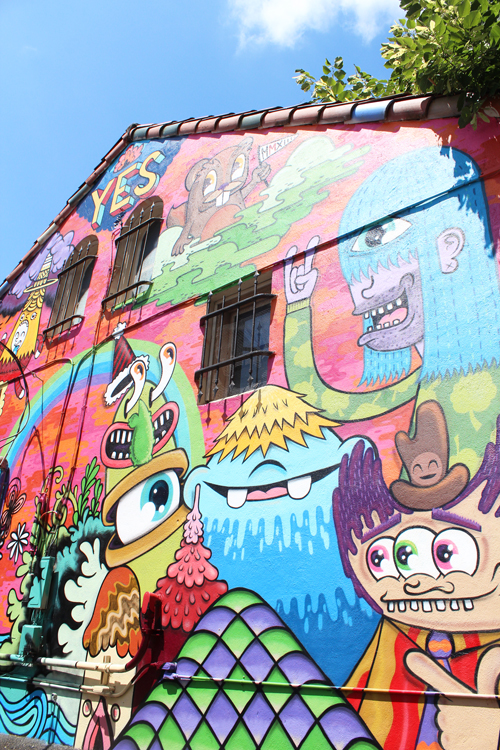
We’ve all seen it. The stickers that grace the backs of street signs. The striking murals covering rows of abandoned warehouses in inner Southeast. Street art is a force of cultural significance the world over. I found myself wondering, though—what is the state of street art in the City of Portland?
As art advocates celebrate the implementation of a tax that takes $35 from residents to support arts education in schools, the Portland street art community continues to struggle against a lack of city support, most significantly manifested in a zero-tolerance graffiti abatement policy that doesn’t distinguish between gang graffiti and public art.
The City of Portland has taken decisive action to combat street art. Portland City Code 14B.80 defines graffiti as “the unauthorized application of marking on someone else’s property, i.e., without permission.” Through the Graffiti Abatement Program, the city has united community members, local businesses and the Portland Police Bureau to identify, report and remove graffiti from public and private spaces. The program hosts graffiti cleanups and removals, as well as annual abatement summits where community members and law enforcement officials gather to discuss the topic.
The city has taken the struggle against graffiti seriously. The city spent $3 million on graffiti abatement in 2012 alone. Despite budget cuts to other city priorities such as public transit, parks and even public safety, the anti-graffiti budget has held steady as the city continues its effort to halt the spread of expression that, for many, blurs the line between art and vandalism.
“Legally, there is not much difference between graffiti and street art; they are both unauthorized personal expression in the public realm,” said Tiffany Conklin, a member of the Portland Street Art Alliance, an organization of artists and community members aimed at advocating and educating others about art in public spaces.
“The adoption of the term ‘street art’ was an effort to rebrand this practice; to differentiate newer forms of urban interventions from original forms of modern graffiti like tagging,” Conklin said. “Generally, graffiti is a culture of words aimed at establishing individual and group identities and communicating within the subculture, while street art is a culture of symbols aimed at communicating with the larger public.”
Speaking with Conklin and Tomas Valladares of the PSAA revealed theirs and others’ dedication to the street art community. By their account, individuals frequently reach out to the PSAA looking to make an artistic contribution to our city, only to be rebuffed by the costly and time-consuming permit process, which discourages many street artists from coming to Portland.
While there has been some excellent work done by businesses looking to partner with local street artists, such as murals recently painted on local businesses Music Millennium and Mellow Mushroom, the PSAA believes that the Portland street art community lacks a central resource to connect artists with businesses and communities friendly to public art.
The debate over Portland’s street art continues as other cities have begun incorporating various methods for dealing with the issue. Cities across the country have embraced street art as a public asset, petitioning famous artists to visit and creating street art fairs that draw in thousands of tourists annually. Cities across the West Coast have created avenues for street artists. Tacoma, Wash., has partnered with artists to create Graffiti Garages, where people can legally create graffiti art; San Francisco has Freespace, a 14,000-square-foot warehouse with space designated specifically for artists.
For those who are interested in finding out what city street art looks like, there are still plenty of opportunities to view it in Portland. There is a very active Portland street art group on Flickr.com that frequently posts new art; street art-friendly galleries such as Upper Playground, Screaming Sky Gallery and One Grand Gallery; and a variety of local Tumblr.com sites dedicated to the art form.
Still, for a city that fashions itself as a destination for artist and young creatives, some might argue that Portland has yet to embrace the idea that street art can be a key facet of a city’s artistic identity.

